Abstract
There was an eight- to eleven-fold increase in the number of eosinophils in the peritoneal cavity of guinea-pigs repeatedly sensitized and subsequently challenged by that route. Peripheral blood eosinophilia was less and inconsistent. There were fewer eosinophils in the peritoneal cavity of guinea-pigs challenged intraperitoneally but sensitized by other routes, than in animals both sensitized and challenged peritoneally. Thus eosinophils were attracted to sites of antigenic challenge in anaphylactically sensitized tissue, particularly when sensitization occurred in the same tissue. In tissues repeatedly injected with antigen, there was an increase of mononuclear cells preceding and greater than the number of eosinophils.
The relation between eosinophilia and anaphylaxis was substantiated by evoking eosinophilia in normal guinea-pigs challenged after passive sensitization with homologous IgG1a (conferring PCA sensitivity for 3 to 4 days), and with IgG1b (conferring PCA sensitivity for 7 to 9 days) which mediate anaphylaxis, but not in animals treated with IgG2, which does not. Similarly complexes containing IgG1 antibodies evoke eosinophilia in normal animals, but complexes containing IgG2 do not.
Despite the association of eosinophilia with anaphylaxis, the number of peritoneal eosinophils following challenge is not greatly influenced by the susceptibility to fatal anaphylaxis, or by the serum PCA titre. Moreover it is doubtful whether passive sensitizing antibody mediates all the changes evoking eosinophilia on challenge, because guinea-pigs passively sensitized with IgG1 antibody for 16 hours had less eosinophilia on challenge than actively sensitized animals, though both passively and actively sensitized animals had the same titre of PCA antibody.
Full text
PDF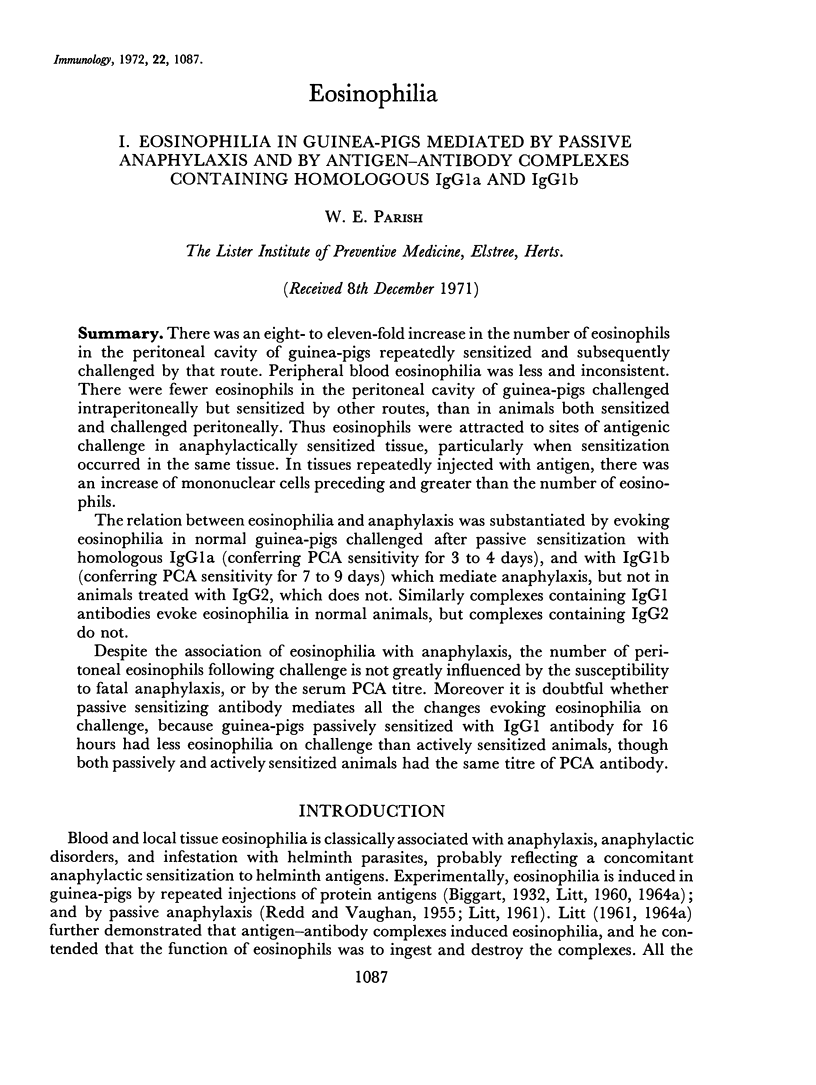
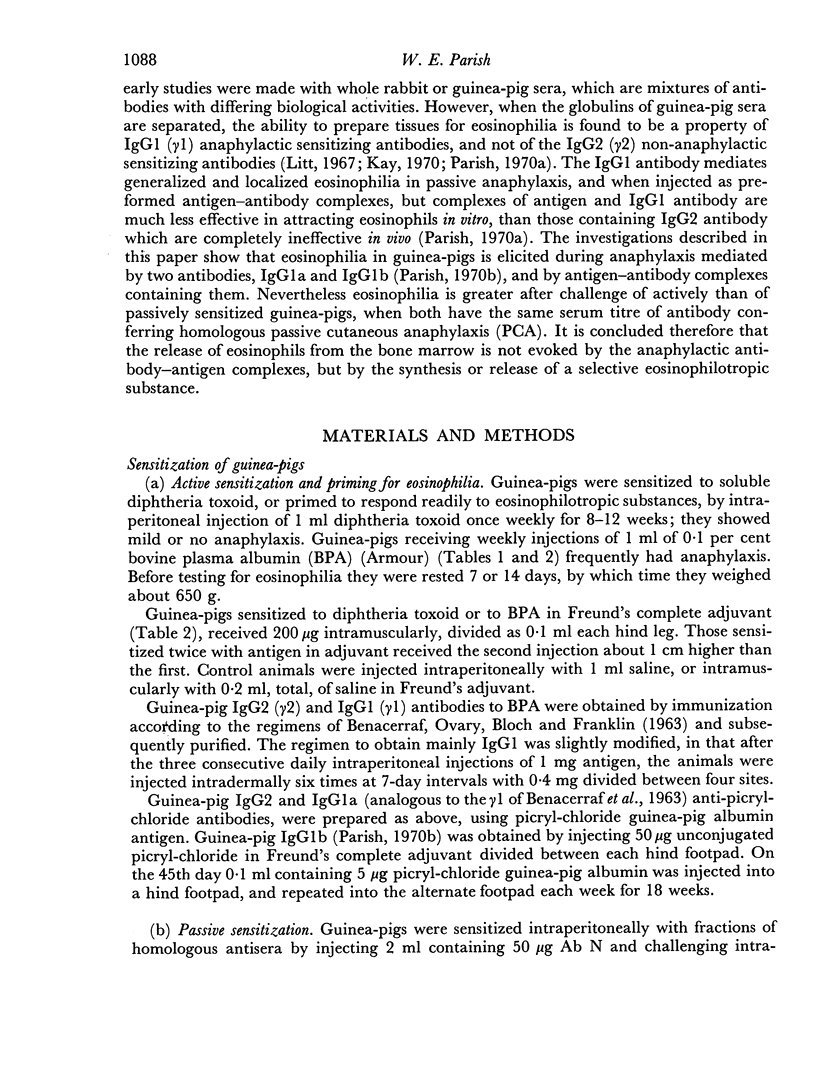
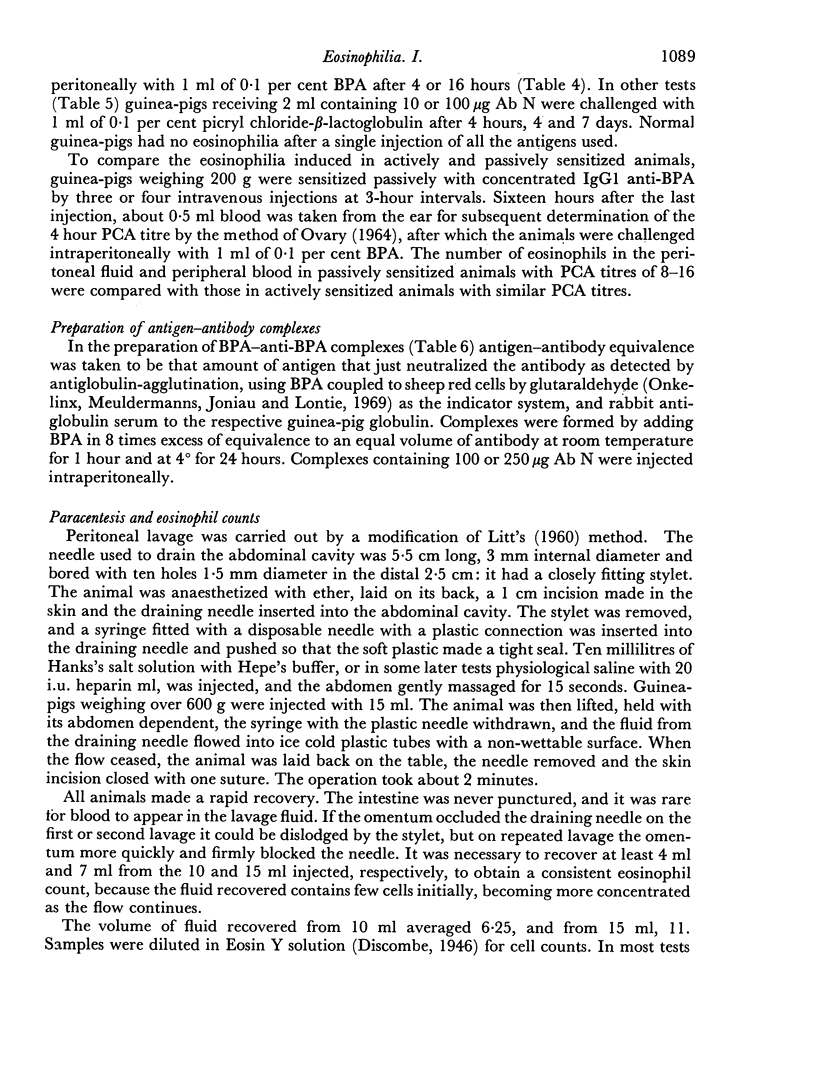
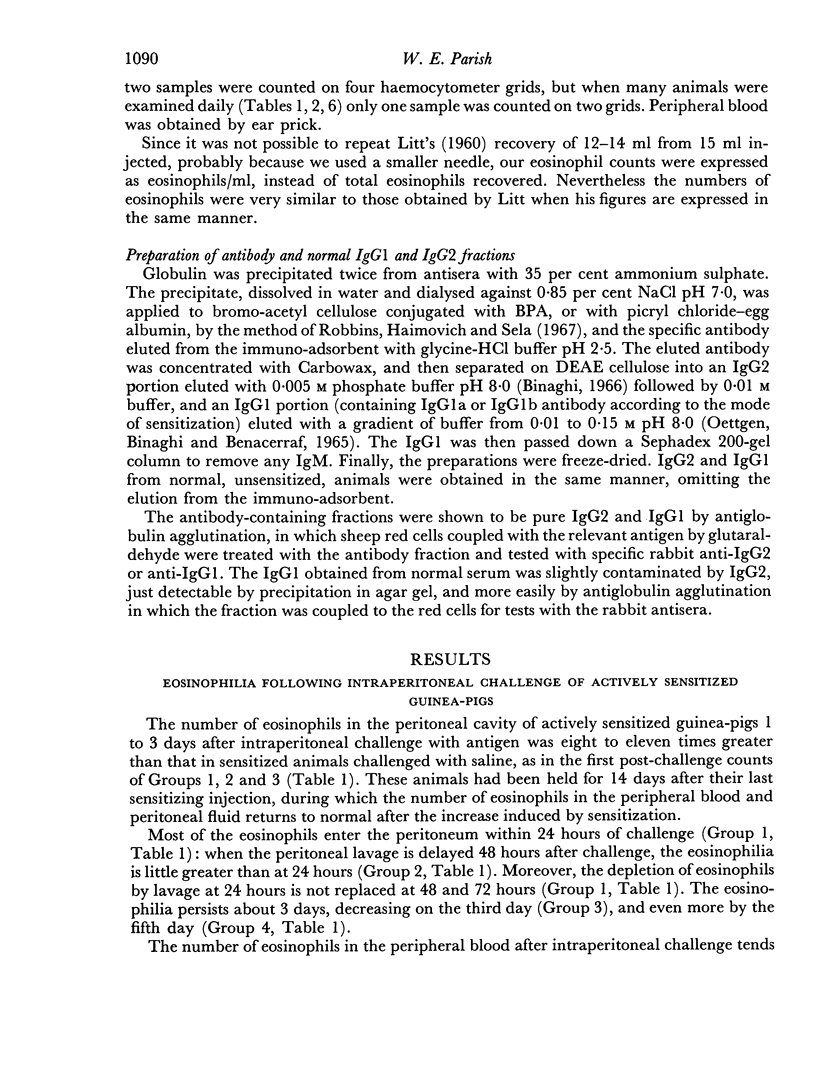
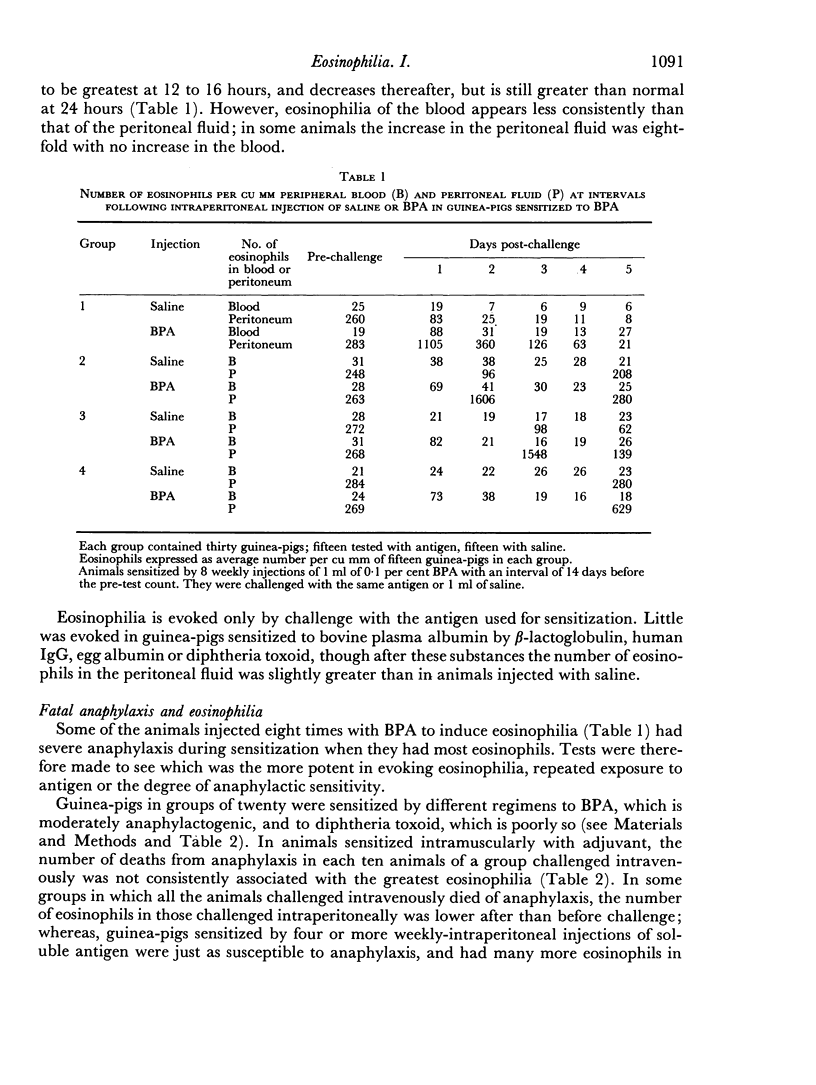
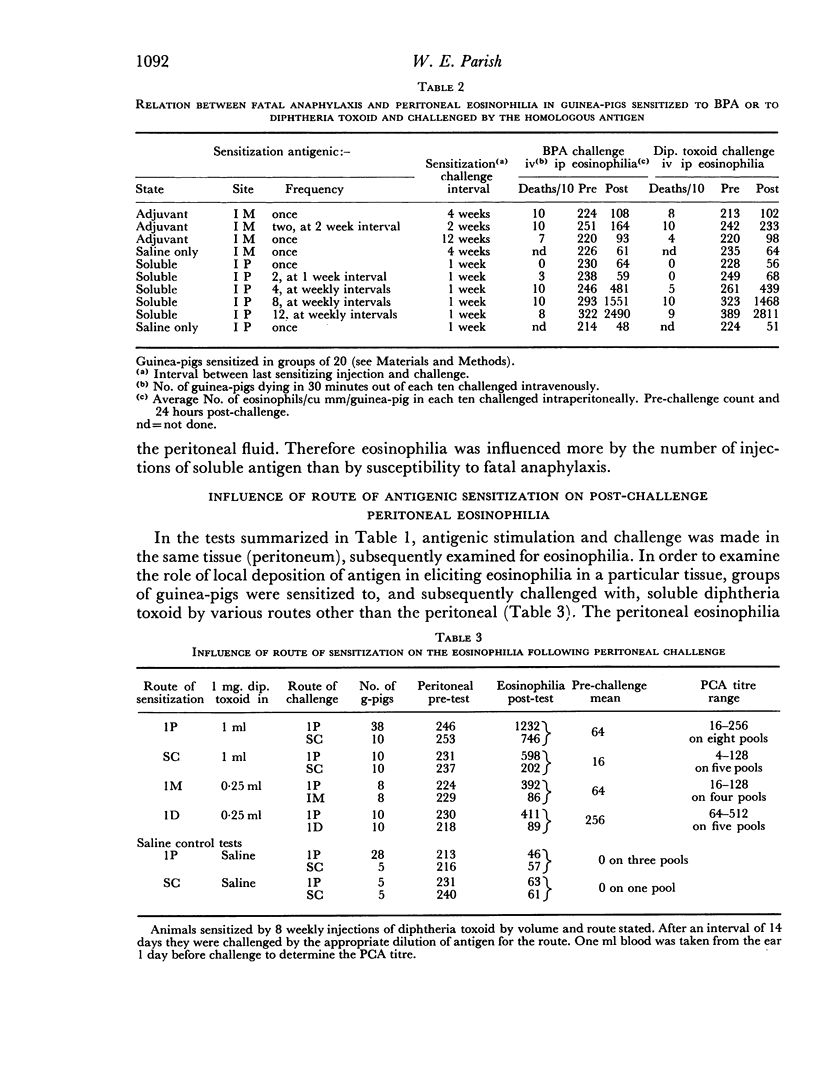
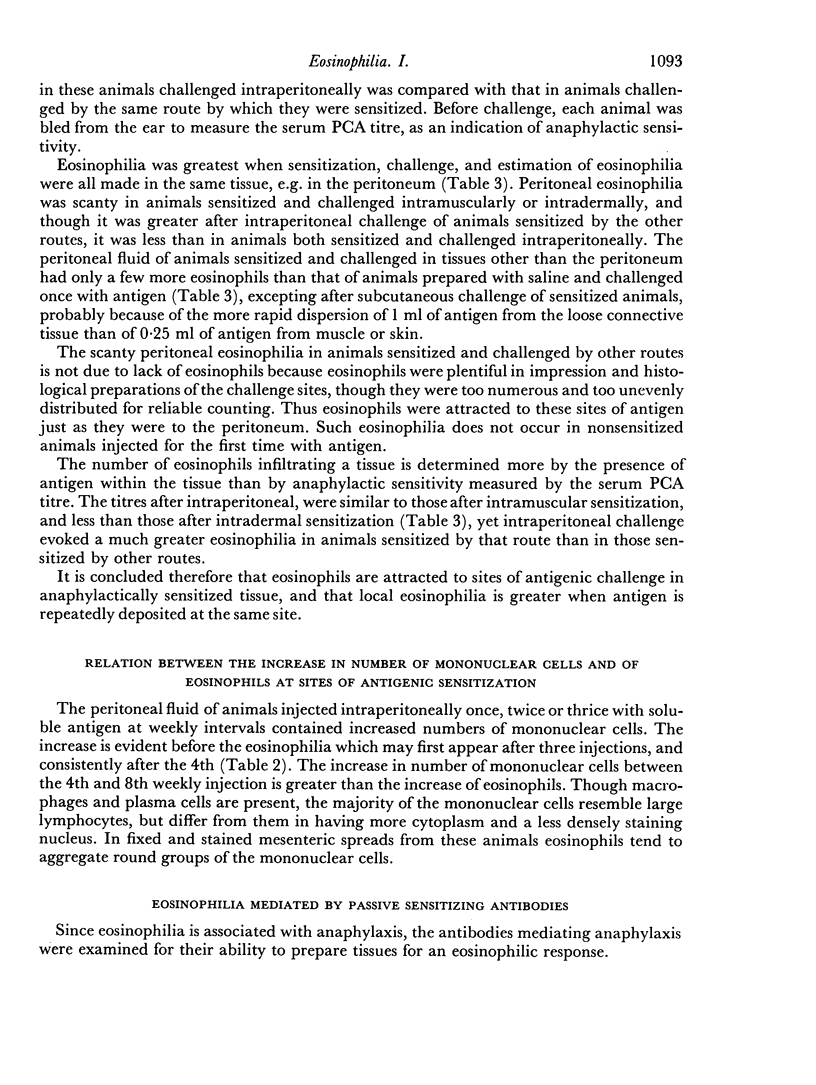
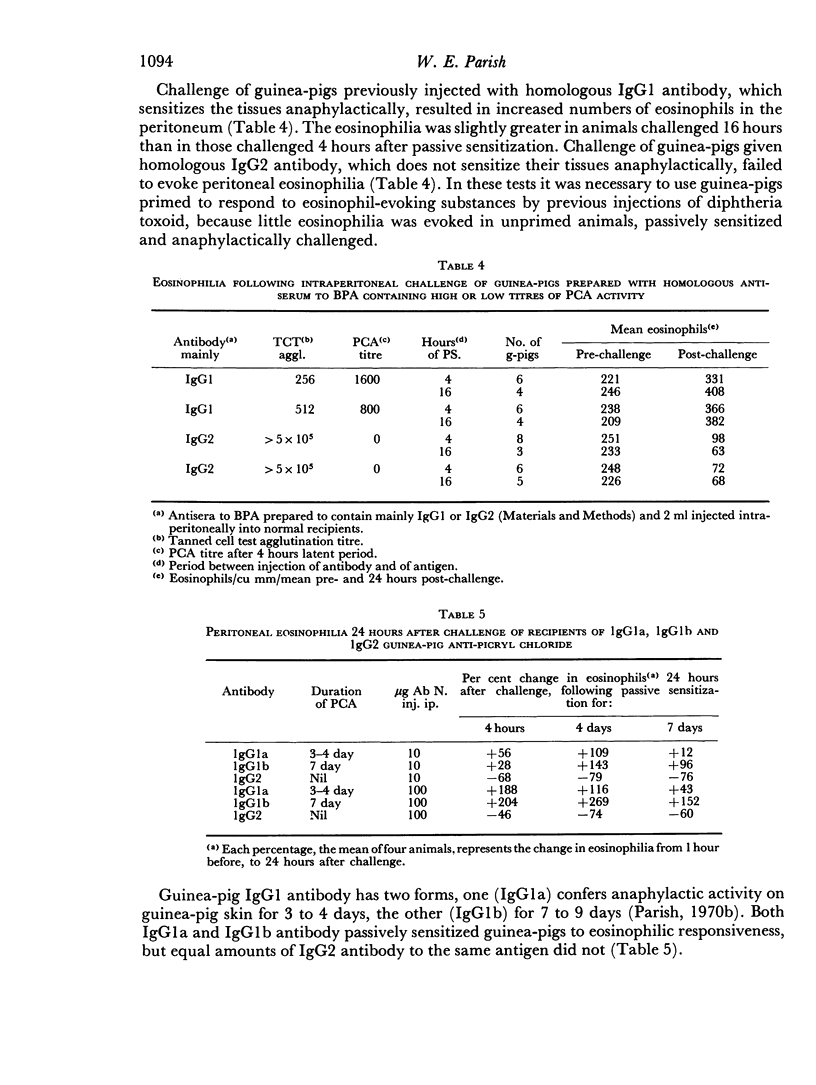
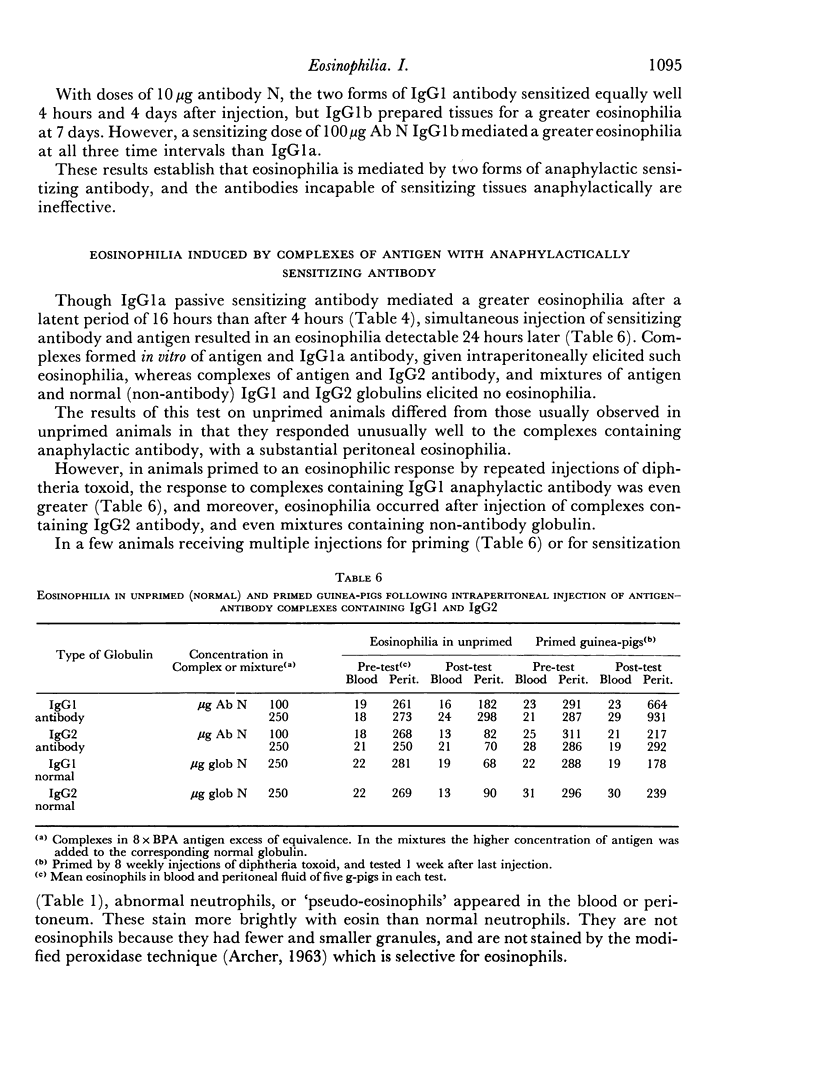
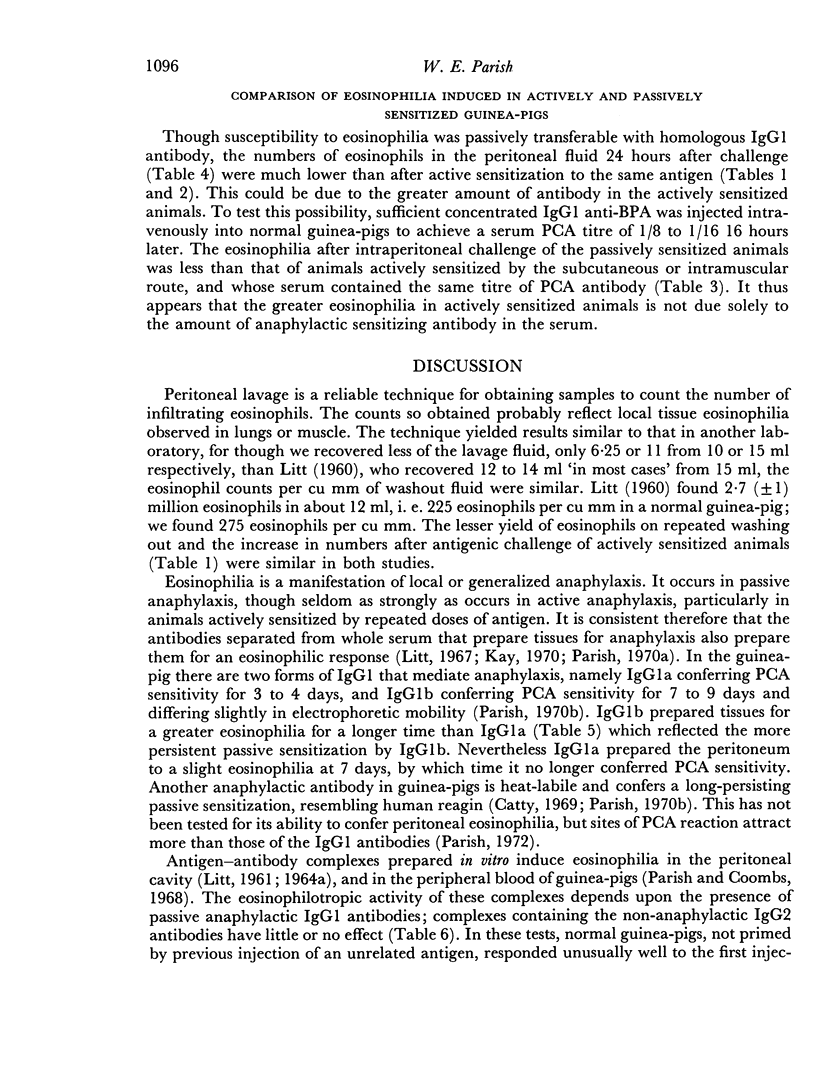
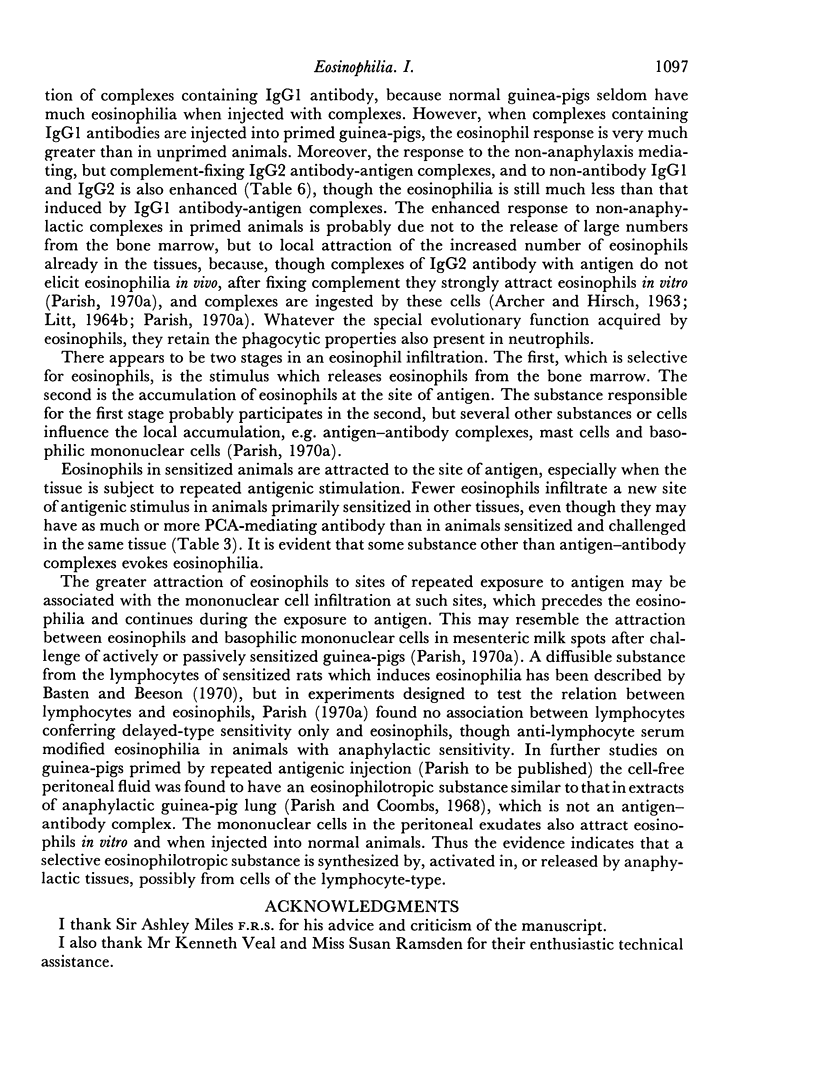
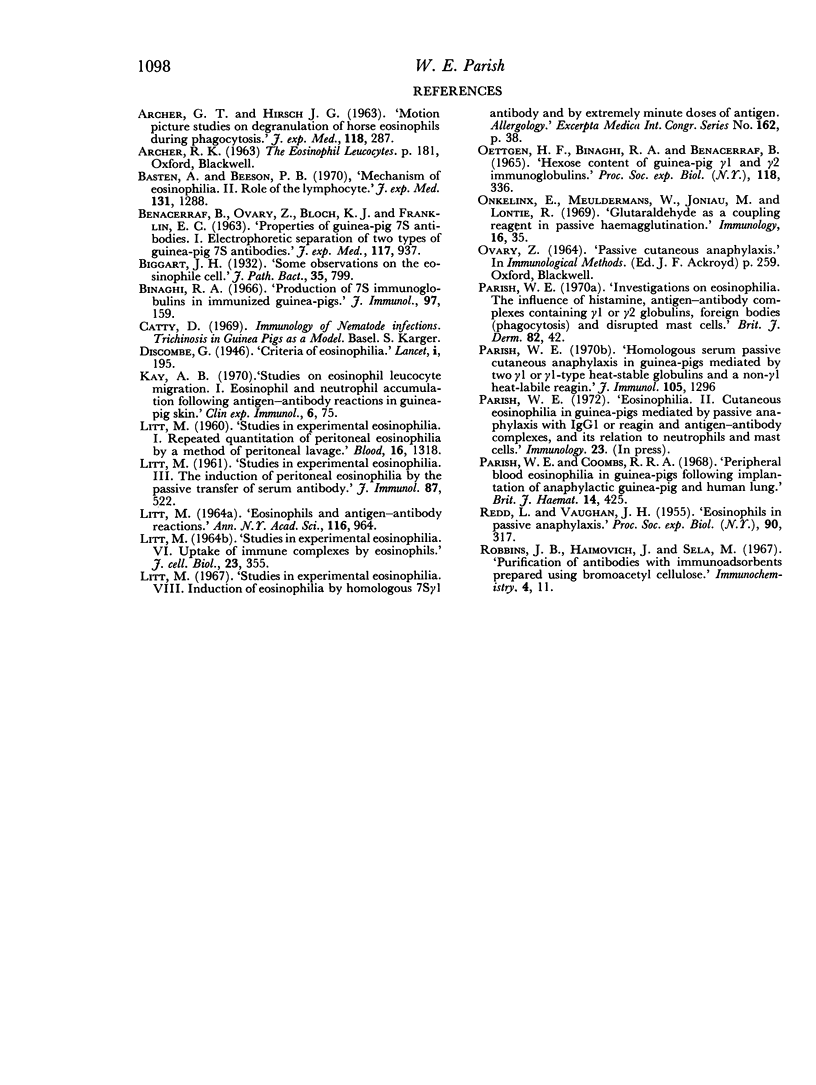
Selected References
These references are in PubMed. This may not be the complete list of references from this article.
- ARCHER G. T., HIRSCH J. G. MOTION PICTURE STUDIES ON DEGRANULATION OF HORSE EOSINOPHILS DURING PHAGOCYTOSIS. J Exp Med. 1963 Aug 1;118:287–294. doi: 10.1084/jem.118.2.287. [DOI] [PMC free article] [PubMed] [Google Scholar]
- Basten A., Beeson P. B. Mechanism of eosinophilia. II. Role of the lymphocyte. J Exp Med. 1970 Jun 1;131(6):1288–1305. doi: 10.1084/jem.131.6.1288. [DOI] [PMC free article] [PubMed] [Google Scholar]
- Binaghi R. A. Production of 7 S immunoglobulins in immunized guinea pigs. J Immunol. 1966 Aug;97(2):159–164. [PubMed] [Google Scholar]
- Kay A. B. Studies on eosinophil leucocyte migration. I. Eosinophil and neutrophil accumulation following antigen-antibody reactions in guinea-pig skin. Clin Exp Immunol. 1970 Jan;6(1):75–86. [PMC free article] [PubMed] [Google Scholar]
- LITT M. STUDIES IN EXPERIMENTAL EOSINOPHILIA. VI. UPTAKE OF IMMUNE COMPLEXES BY EOSINOPHILS. J Cell Biol. 1964 Nov;23:355–361. doi: 10.1083/jcb.23.2.355. [DOI] [PMC free article] [PubMed] [Google Scholar]
- LITT M. Studies in experimental eosinophilia. I. Repeated quantitation of peritoneal eosinophilia in guinea pigs by a method of peritoneal lavage. Blood. 1960 Sep;16:1318–1329. [PubMed] [Google Scholar]
- LITT M. Studies in experimental eosinophilia. III. The induction of peritoneal eosinophilia by the passive transfer of serum antibody. J Immunol. 1961 Nov;87:522–529. [PubMed] [Google Scholar]
- OETTGEN H. F., BINAGHI R. A., BENACERRAF B. HEXOSE CONTENT OF GUINEA PIG GAMMA-1 AND GAMMA-2 IMMUNOGLOBULINS. Proc Soc Exp Biol Med. 1965 Feb;118:336–342. [PubMed] [Google Scholar]
- Onkelinx E., Meuldermans W., Joniau M., Lontie R. Glutaraldehyde as a coupling reagent in passive haemagglutination. Immunology. 1969 Jan;16(1):35–43. [PMC free article] [PubMed] [Google Scholar]
- Parish W. E., Coombs R. R. Peripheral blood eosinophilia in guinea-pigs following implantation of anaphylactic guinea-pig and human lung. Br J Haematol. 1968 Apr;14(4):425–445. doi: 10.1111/j.1365-2141.1968.tb06994.x. [DOI] [PubMed] [Google Scholar]
- Parish W. E. Homologous serum passive cutaneous anaphylaxis in guinea pigs mediated by two gamma-1 or gamma-1-type heat-stable globulins and a non-gamma-1 heat-labile reagin. J Immunol. 1970 Nov;105(5):1296–1298. [PubMed] [Google Scholar]
- REDD L., VAUGHAN J. H. Eosinophiles in passive anaphylaxis. Proc Soc Exp Biol Med. 1955 Nov;90(2):317–319. doi: 10.3181/00379727-90-22020. [DOI] [PubMed] [Google Scholar]
- Robbins J. B., Haimovich J., Sela M. Purification of antibodies with immunoadsorbents prepared using bromoacetyl cellulose. Immunochemistry. 1967 Jan;4(1):11–22. doi: 10.1016/0019-2791(67)90192-9. [DOI] [PubMed] [Google Scholar]


